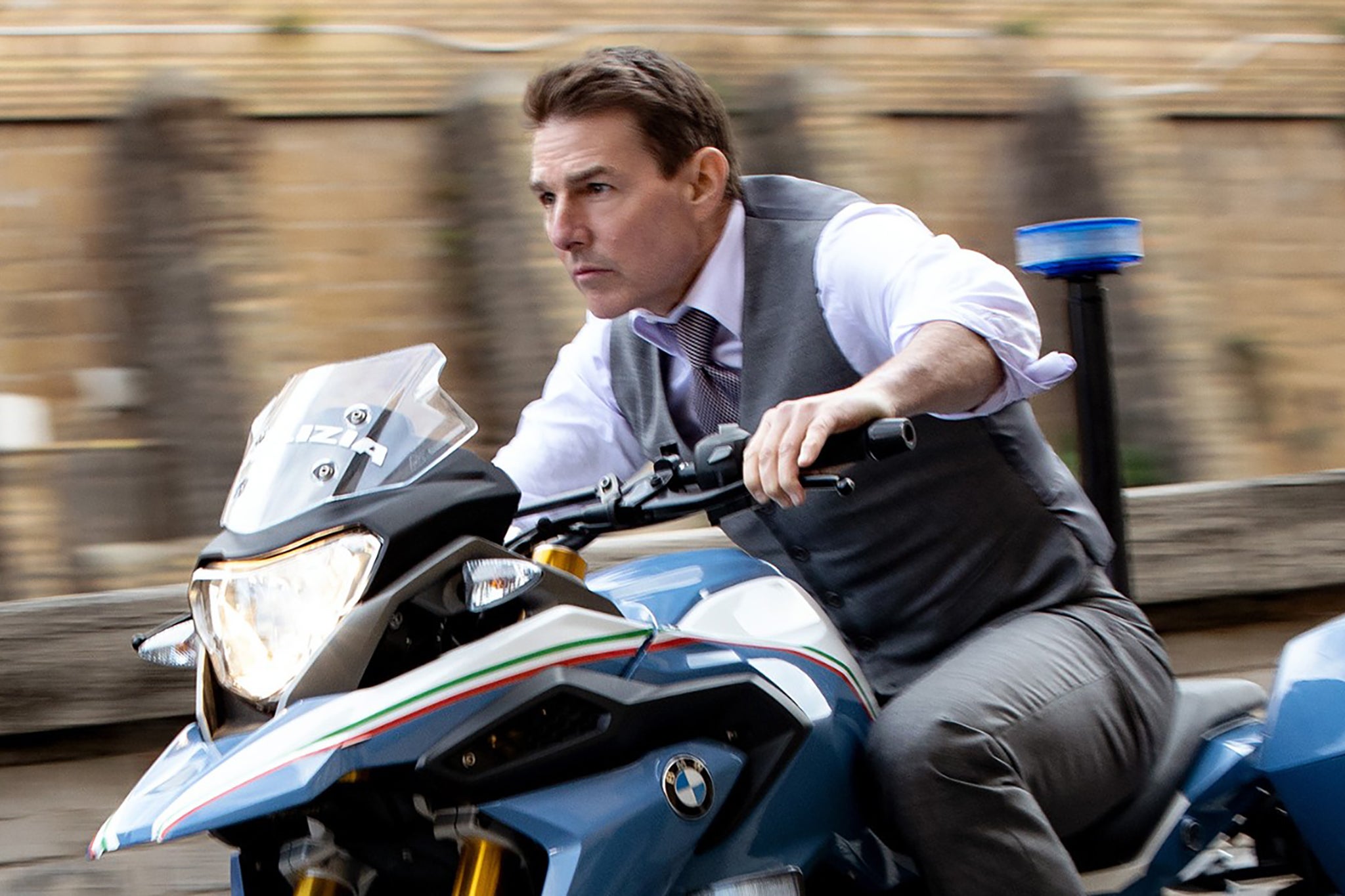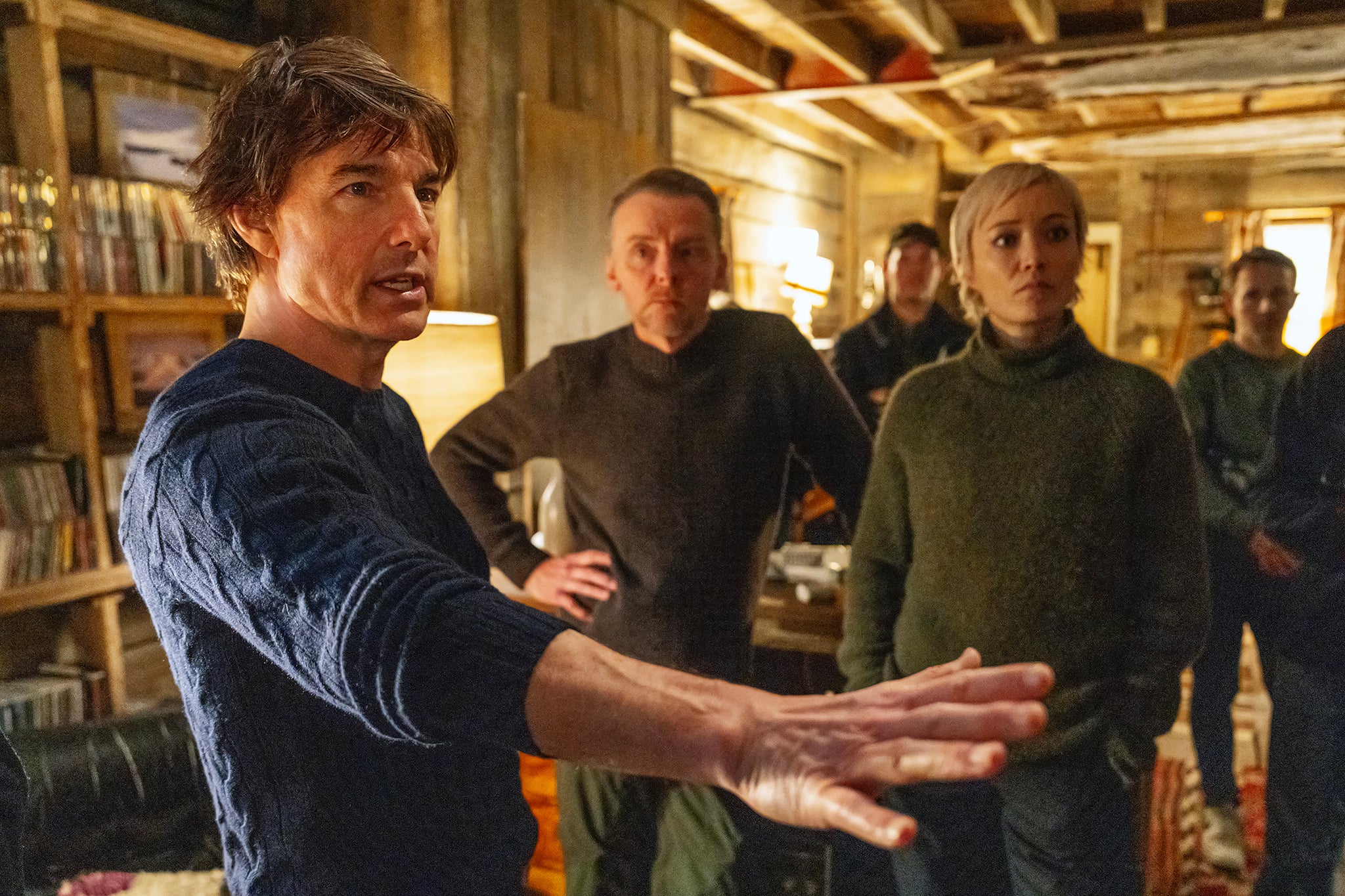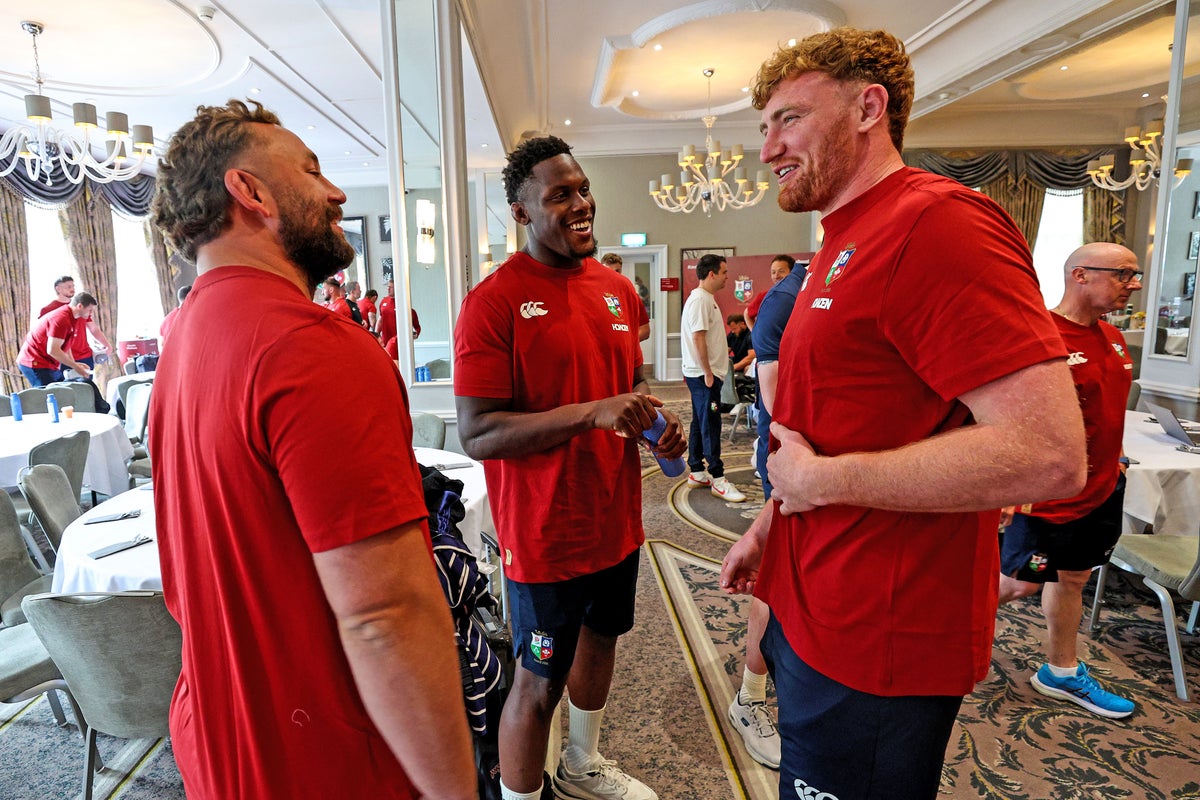In 2000, when Tom Cruise was still married to Nicole Kidman and still making movies without explosions in them, he sat down for an interview with Vanity Fair. He still did interviews back then, too. His latest film, that summer’s Mission: Impossible 2, was a curious prospect. Cruise didn’t do sequels. Only a handful of giant stars were at the turn of the millennium. But Cruise didn’t necessarily see Mission: Impossible 2 as a conventional follow-up. These spy movies of his – merely a whisper of a franchise at that point – were, to be clear, singular visions defined by whoever was behind the camera.
“I never looked at it as a sequel in making it,” he explained. “I never wanted it to hinge on anything.” The first film, released four years earlier, was very much cast in the image of its director, Brian De Palma. It’s paranoid and sensual, with Cruise captured in repeated Dutch angles. John Woo, the Hong Kong maximalist behind Face/Off and Hard Boiled, took over for M:I 2, and brought with him his usual bag of tricks: balletic violence, slo-mo, lots and lots of doves. “[John] wanted to do it as a mythic adventure picture,” Cruise continued. “All the colour tones in the picture are earth, wind, and fire. That’s what got me excited. It’s not going to be a direct sequel. You don’t have to do that with Mission: Impossible, because every time it’s a different adventure. The director dictates the style.”
It was a noble, intriguing approach. Anti-motif as motif. And for a while it was evident. Mission: Impossible III, in 2006, had the time-hopping, occasionally soapy approach of JJ Abrams, making his feature debut after years behind the scenes of the Jennifer Garner TV series Alias. And then Pixar stalwart Brad Bird took the reins of 2011’s Ghost Protocol, a pulpy yarn heavy on elaborate set pieces and lighter on character conflict – of course an animator was behind it.
But as the Mission: Impossible series has gone on – the eighth and likely final entry is out this week – it has become more traditionally serialised, with more recurring characters, more overarching subplots, and a sleek and efficient sense of spectacle at every turn. Under the direction of Christopher McQuarrie (the man behind 2015’s Rogue Nation, 2018’s Fallout, 2023’s Dead Reckoning and, now, The Final Reckoning), it has embraced a kind of anonymous dazzle, one befitting of its increasingly mysterious star. And perhaps that’s the best way to explain the trajectory of these movies: not as films that lost their auteurist bent, but as films whose biggest and most influential auteur-for-hire became its leading man. McQuarrie is on the credits, sure, but episodes four through eight are undoubtedly movies written, directed, produced – and hell, probably catered – by Mr Tom Cruise.
Cruise is the lens through which you have to consider these films, which have been around so long that they are quite scarily three years older than our reigning Best Actress Oscar winner, Anora’s Mikey Madison. Yes, they have always been thrilling, hi-tech stunt extravaganzas, but they’re also been statements on the man himself, and vessels for the kind of image Cruise wishes to portray in the public sphere at any given time.
The first Mission: Impossible was designed, way back in 1996, as a means to somewhat harden Cruise’s image, and lift him out of boyish mentee roles, as in A Few Good Men or Days of Thunder. “He still has something to prove in terms of people seeing everything he can do,” director Cameron Crowe said that year. By 2000, Mission: Impossible 2 arrived like a commercial course correction, on the heels of two projects very much designed to show people what Cruise could do: the mature, hard-edged Magnolia (his turn as a proto-Andrew Tate earned him an Oscar nomination), and his 1999 erotic drama Eyes Wide Shut – a film now rightly considered a classic, but at the time regarded as an expensive disappointment.

Mission: Impossible III served a similar purpose, following years of further bad press. Nicole Kidman had won the lion’s share of public goodwill in their divorce, finalised in 2001, and was enjoying a revitalised movie career. Cruise, meanwhile, had embarked on a series of dismaying PR snafus, most of which involved his profile in the Church of Scientology, as well as his wildly over-documented relationship with Katie Holmes. The pair were engaged within seven weeks of meeting in 2005, and both parties seemed to spend the majority of their respective summer blockbuster press tours – him for Steven Spielberg’s War of the Worlds, her for Batman Begins – talking about their newfound love. “Within Hollywood,” went The New York Times that year, “the discussion among agents, producers, studio executives and other actors has been focused on whether Hollywood’s biggest box office star was doing long-term harm to his career.”
Mission: Impossible III took years to come together – Scarlett Johansson and Kenneth Branagh were both attached to an earlier incarnation ultimately binned in 2004 – and Paramount Pictures reportedly got cold feet about the project in the midst of the Cruise/Holmes circus. Cruise ended up taking a pay cut to get the film made, and the timing of the film is notable: in it, his secret agent Ethan Hunt is at his most blissfully domesticated, living a (relatively) ordinary life with a beautiful brunette played by Michelle Monaghan, a dead ringer for Holmes. Ethan – a coldly terse spy in movies one and two – was reimagined as a family man who’d do anything to protect his lady love. Missing may have been an E-meter device or cries of “hail Xenu”, but the parallels were clear.
By 2011’s Ghost Protocol, released at the tail end of Cruise and Holmes’s marriage, Monaghan’s Julia had been largely excised from the narrative, her death faked to ensure her survival. And uncertainty still hovered over Cruise’s appeal in the marketplace, particularly in the wake of a string of films with bloated budgets and limited returns, among them the speedily forgotten action romcom Knight & Day, and indeed Mission: Impossible III, which remains the lowest-grossing film in the franchise. Jeremy Renner, cast as a plucky secret agent in the film, was even mooted to take over the series upon Cruise’s (potential) exit. That plan reportedly stalled during production of the film, which introduced McQuarrie into the mix. The script – officially credited to Josh Appelbaum and André Nemec – was heavily rewritten by McQuarrie during production, with the filmmaker later suggesting that large swathes of backstory for Renner’s character were jettisoned, leaving him a more muted presence in the film’s final cut. It was a savvy move by Cruise, and effectively saw him wrest back control of a franchise that had threatened to move on without him.

Watch Apple TV+ free for 7 day
New subscribers only. £8.99/mo. after free trial. Plan auto-renews until cancelled.
Try for free
ADVERTISEMENT. If you sign up to this service we will earn commission. This revenue helps to fund journalism across The Independent.

Watch Apple TV+ free for 7 day
New subscribers only. £8.99/mo. after free trial. Plan auto-renews until cancelled.
Try for free
ADVERTISEMENT. If you sign up to this service we will earn commission. This revenue helps to fund journalism across The Independent.

Cruise’s last major print interview took place in June 2012, to promote the musical Rock of Ages, weeks before Holmes reportedly blindsided him with divorce papers while he was filming the sci-fi movie Oblivion in Iceland. We didn’t know it at the time, but Cruise’s public profile was about to be forever changed: gone were the in-depth interviews, any public discussion of his belief in Scientology, as well as any (public, at least) long-term girlfriends. Mission: Impossible changed alongside him.
Under McQuarrie, the franchise has become slavishly fixated on the Ethan Hunt myth, which is in turn the Tom Cruise myth. Ethan is now a hero, an icon, a doomed martyr. Gravity is an irrelevance to him. Why use the lift of a tall building when you can rappel your way up it from the outside? Large reams of dialogue – from his trusty sidekick Luther (Ving Rhames) to his starry-eyed tech whizz Benji (Simon Pegg) – espouse the character’s importance to the world. “Ethan Hunt is the living manifestation of destiny,” Alec Baldwin’s CIA chief declared in Rogue Nation. Concurrently, Cruise has anointed himself the saviour of big-screen cinema, and has come to resemble less a human movie star than a monk-like mystery man with a penchant for daredevil activities.
Cruise promotes his films’ most perilous stunts by performing perilous stunts himself (last week saw him climb on top of London’s BFI cinema ahead of collecting a BFI Fellowship), while his handful of softball modern interviews almost entirely revolve around his dedication to the craft, the work, the important stuff. The blurring is complete. We are technically watching Ethan Hunt in a Mission: Impossible movie, but really it’s Tom Cruise we’re watching dangle off the wing of a plane, or be called upon to rescue civilisation.

This isn’t to say that the Mission: Impossible franchise is any less captivating than it used to be. Many would argue that it only came into its own once it started to properly fuse with Cruise’s public image and become a kind of cinematic Evel Knievel show, plot logic be damned. But I’m curious to see Cruise outside of this space again, away from metatextual vanity projects that lean into their mercurial, death-defying Tom Cruisiness. Away from McQuarrie, really, who has been involved in all but one of the eight films Cruise has made in the past decade.
The Final Reckoning – introduced as “a Tom Cruise production”, naturally – builds to an uncertain conclusion, sans the finite crescendo of, say, Daniel Craig’s Bond in No Time to Die. But you find yourself not asking questions about Ethan’s next stand, or that of the people around him left standing. Instead, it’s all about the man playing him. Who is Tom Cruise without these movies? And where does he go from here?
‘Mission: Impossible – The Final Reckoning’ is in cinemas from 21 May





